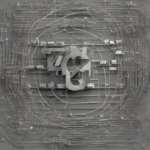Medical Payment Exchange: Simplifying Healthcare Transactions
In the intricate landscape of healthcare, the exchange of financial information plays a pivotal role. Medical payment exchanges (MPXs) emerge as crucial facilitators, streamlining the flow of funds between healthcare providers, payers, and patients. This comprehensive guide delves into the intricacies of MPXs, exploring their functions, benefits, challenges, and evolving landscape.
Understanding Medical Payment Exchanges (MPXs)
MPXs, also known as healthcare payment networks, serve as central hubs for electronic transactions related to medical payments. They function as intermediaries, enabling seamless communication and secure data transfer between various stakeholders in the healthcare ecosystem.
- Connecting the Healthcare Ecosystem: MPXs bridge the gap between disparate systems used by providers, payers, and patients, creating a unified platform for communication and data exchange.
- Facilitating Payment Processing: MPXs streamline the processing of claims, payments, and remittances, reducing manual intervention and improving efficiency.
- Ensuring Secure Data Transmission: MPXs adhere to stringent security protocols, safeguarding sensitive financial information and maintaining compliance with industry regulations.
- Promoting Transparency and Accountability: MPXs provide real-time visibility into the payment process, fostering transparency and accountability among all participants.
Types of Medical Payment Exchanges
MPXs operate in various forms, each catering to specific needs and functionalities:
- Traditional MPXs: These exchanges focus on facilitating electronic claims submission, payment processing, and remittance advice, streamlining traditional payment workflows.
- Value-Based Care MPXs: Designed for value-based care models, these exchanges support the exchange of data related to patient outcomes, quality metrics, and performance-based payments.
- Provider-to-Provider MPXs: These exchanges enable providers to exchange payments for referrals, consultations, or other services, simplifying inter-provider transactions.
- Patient-Centric MPXs: Emerging platforms aim to empower patients with greater control over their medical bills, allowing them to access and manage their payment information directly.
Key Features and Benefits of MPXs
MPXs offer a multitude of advantages that enhance the efficiency, accuracy, and security of medical payments:
- Reduced Administrative Burden: MPXs automate manual processes, reducing administrative overhead and freeing up staff for more patient-centric tasks.
- Faster Payment Cycles: Streamlined workflows and automated processing expedite payment cycles, improving cash flow for providers and payers.
- Enhanced Accuracy: MPXs minimize errors in data entry and processing, ensuring accurate payments and reducing disputes.
- Improved Security: Robust security measures protect sensitive financial data from unauthorized access, mitigating fraud and data breaches.
- Increased Transparency and Visibility: Real-time tracking of payments and transactions provides transparency and accountability for all stakeholders.
- Reduced Costs: MPXs eliminate the need for manual processes, reducing administrative costs and improving operational efficiency.
- Enhanced Patient Satisfaction: Streamlined payment processes contribute to improved patient satisfaction by reducing billing delays and simplifying payment options.
Challenges and Considerations for MPX Adoption
While MPXs offer significant benefits, certain challenges and considerations need to be addressed for successful implementation:
- Interoperability Issues: Integrating MPXs with existing healthcare systems can pose interoperability challenges, requiring careful planning and coordination.
- Data Security and Privacy Concerns: Protecting sensitive patient information and complying with privacy regulations is paramount, requiring robust security measures.
- Cost of Implementation: Implementing MPXs can involve significant upfront costs, including infrastructure, software, and integration efforts.
- Resistance to Change: Some stakeholders may resist adopting new technologies, requiring effective change management strategies.
- Lack of Standardization: The absence of industry-wide standards for MPXs can create compatibility issues and hinder interoperability.
The Future of Medical Payment Exchanges
The landscape of MPXs is rapidly evolving, driven by technological advancements, evolving payment models, and growing emphasis on patient empowerment.
- Integration with Artificial Intelligence (AI): AI-powered MPXs can automate tasks, enhance fraud detection, and provide personalized payment options.
- Blockchain Technology: Blockchain can enhance security and transparency in MPXs, streamlining transactions and facilitating payment tracking.
- Value-Based Care: MPXs will play an increasingly vital role in supporting value-based care models, facilitating performance-based payments and data exchange.
- Patient Engagement: MPXs are expected to empower patients with greater control over their medical bills, providing online payment options and personalized financial information.
Conclusion: Empowering Healthcare Transactions
Medical payment exchanges represent a transformative force in healthcare, simplifying payment processes, enhancing efficiency, and improving patient satisfaction. By addressing challenges and embracing innovation, MPXs are poised to play a pivotal role in shaping the future of healthcare transactions.








